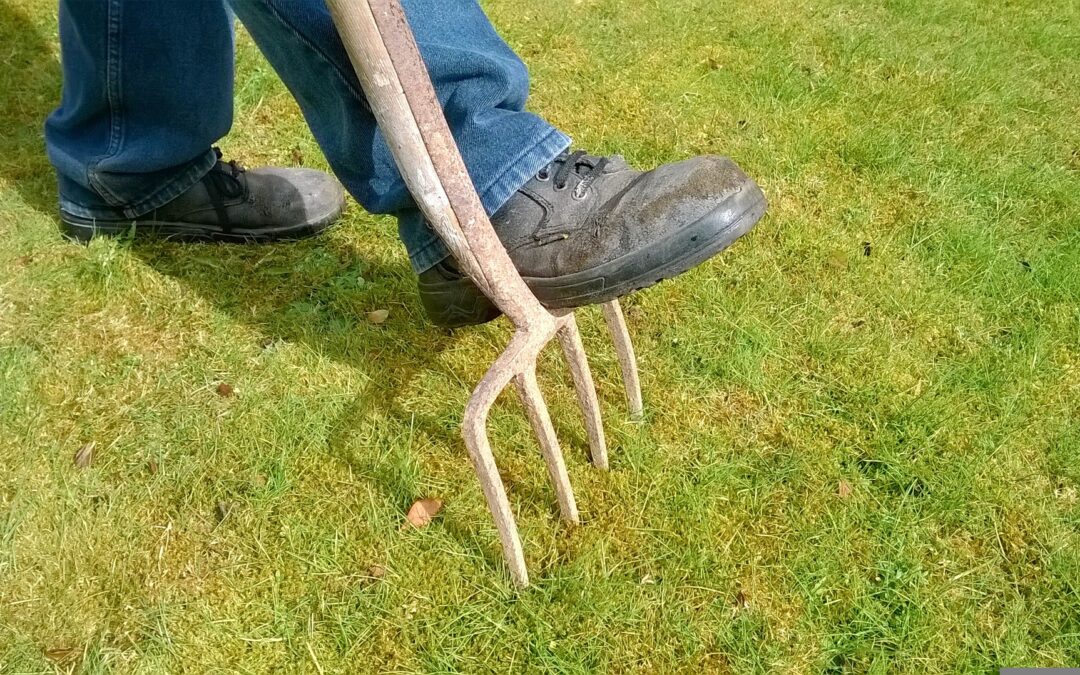What Is Lawn Aeration and How Do You Know If Your Lawn Needs it?
If you’re unfamiliar with lawn aeration, it’s simple. Although you can do it with hand tools such as a steel spike aerator or spike shoes, most professionals use a machine such as a walk-behind powered aerator, which extracts small plugs from your lawn. Aeration allows moisture, nutrients, and oxygen to feed the roots of your grass.
How Can You Know if Need Lawn Aeration?
Too Much Thatch
If your lawn dries out often and easily, it may be due to an excessive layer of thatch below the surface. Thatch is a dead and living shoots, stems, and roots, which accumulate between the soil and grass. If you shovel a slice of your lawn 2 or 3 inches deep, you can see where that thatch lies. If it is more than ½ inch deep from the top, it’s time to aerate.
Heavy Compaction
Compaction is soil pressed together, which makes it difficult for water, nutrients, and roots to work. High traffic is one cause of compaction. For example, if your yard is the local ball field for the neighborhood kids, it’s probably compacted. Newly constructed homes often have compacted soil due to construction traffic, foot, and machine.
“The main reason for aerating is to alleviate soil compaction. Compacted soils have too many solid particles in a certain volume or space, which prevents the proper circulation of air, water, and nutrients within the soil. Excess lawn thatch or heavy organic debris buried under the grass surface can also starve the roots from these essential elements.” — Briggs and Stratton.
Layered Soil
When a lawn, or part of a lawn, is sodded, the soil on the sod can be a finer texture than the soil below, which can adversely affect drainage since the finer soil absorbs and holds moisture. This is called layering, which can lead to compaction and poor root development.
When Overseeding
“Aerify the area, punching 20 to 40 holes per ft2 with the largest tines available. This will increase the seed-soil contact and improve germination and establishment rate.” — Purdue Extension
What Are the Benefits of Lawn Aeration?
Here are a few benefits of aerating your lawn from North Dakota State University Ag.
Aeration will:
- Invigorate roots and stimulate new growth.
- Reduce soil compaction.
- Reduce thatch accumulation.
- Enhance the movement of water and nutrients into the soil.
- Smooth out bumpy lawns.
Your lawn needs to breathe. It needs room for moisture and nutrients to do its job, and when you seed, the seeds need room to grow. Aeration accomplishes all of this. Unfortunately, most people are unaware of the benefits of aerating your lawn. Whether residential or commercial, aeration can make all the difference in the health and appearance of your lawn.
How Can We Help You?
Berger Hargis has a company philosophy of providing personal excellence for all our services. Our growth and success have been due entirely to our commitment to honest, excellent customer service. The company is built on the referral business we have received due to this philosophy.
If we can answer any questions about aerating your lawn, please don’t hesitate to Contact Us.
And if you’re looking for a career where you can have fun at work, call (317) 243-0100.
About the Author
Randy Clark is a speaker, coach, and author. He publishes a weekly blog at Randy Clark Leadership.com. Randy is passionate about social media, leadership development, and flower gardening. He’s a beer geek, and on weekends he can be found fronting the Rock & Roll band Under the Radar. He’s the proud father of two educators; he has four amazing grandchildren and a wife who dedicates her time to helping others. Randy is the author of the Amazon bestseller The New Manager’s Workbook, a crash course in effective management.
Image by Eugene Brennan from Pixabay
Go Back







